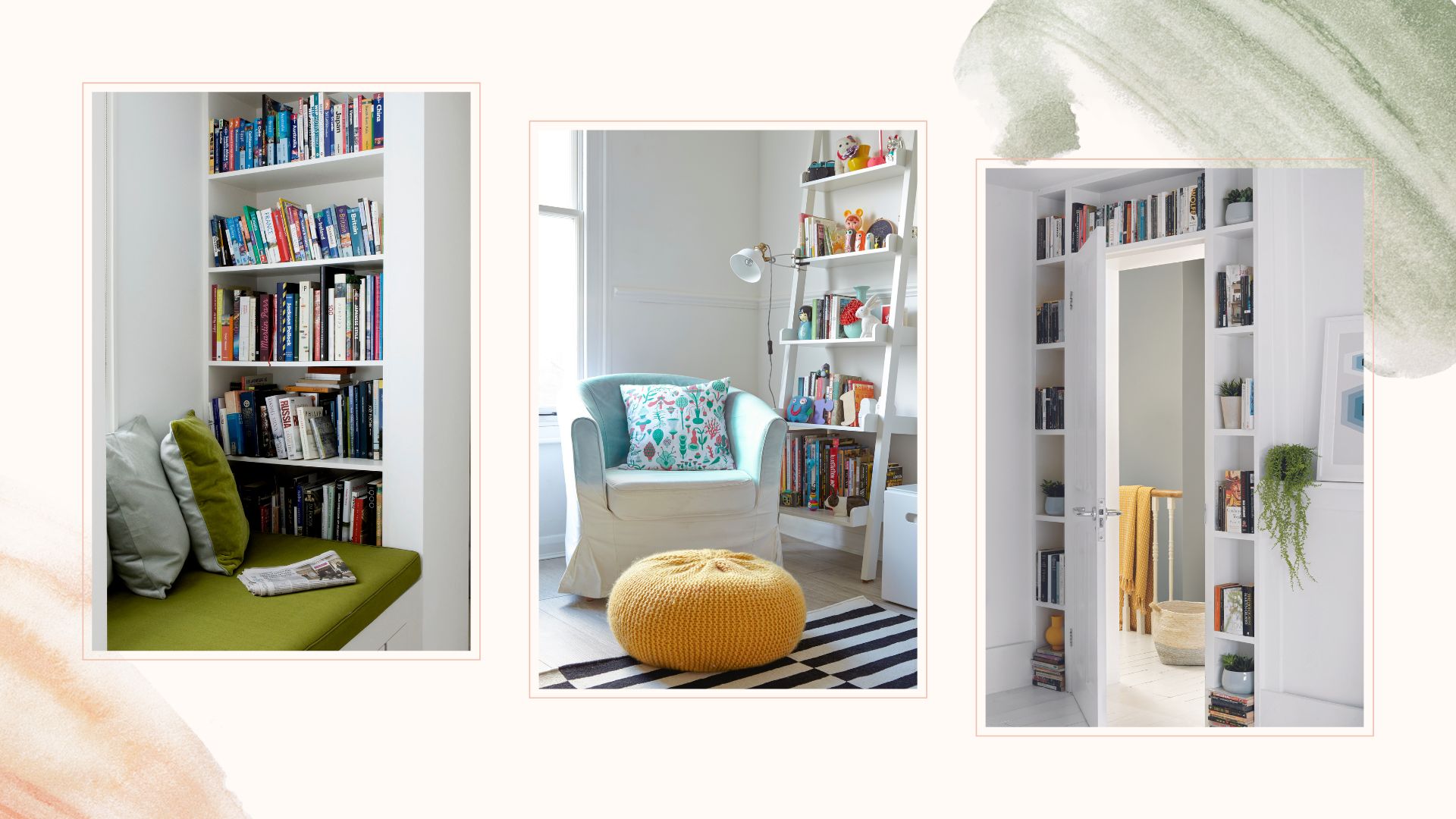
Organization and styling ideas for books aren’t just for those with generously sized rooms. With the right bookshelf ideas, you can make your book collection look good, whatever the size of the space you’re working with.
Just like when organizing anything in a small space, trying to fit everything in while creating a room that’s both functional, beautiful, and not too cluttered can be a challenge.
But if you’re faced with huge piles of books and don’t have room to store them, or if your collection feels too big for the space you have, then don’t panic. We spoke to a number of organization experts, who assured us that organizing your bookshelves beautifully in a small room is possible. Read on for their tips and ideas for styling books in small rooms.
Bookshelf ideas for small rooms: 11 ways to organize tiny spaces
"Books can easily crowd up a space, especially for those who are avid book lovers and like to collect the books they read," says Kenzie Harkey, owner of the home organization firm Simply Dare. “If you don’t have a lot of wall space or floor space, storage can be a little tricky so you have to think outside the box."
It’s not all about storage, though. Sometimes you need to start by examining your collection…
1. Declutter first
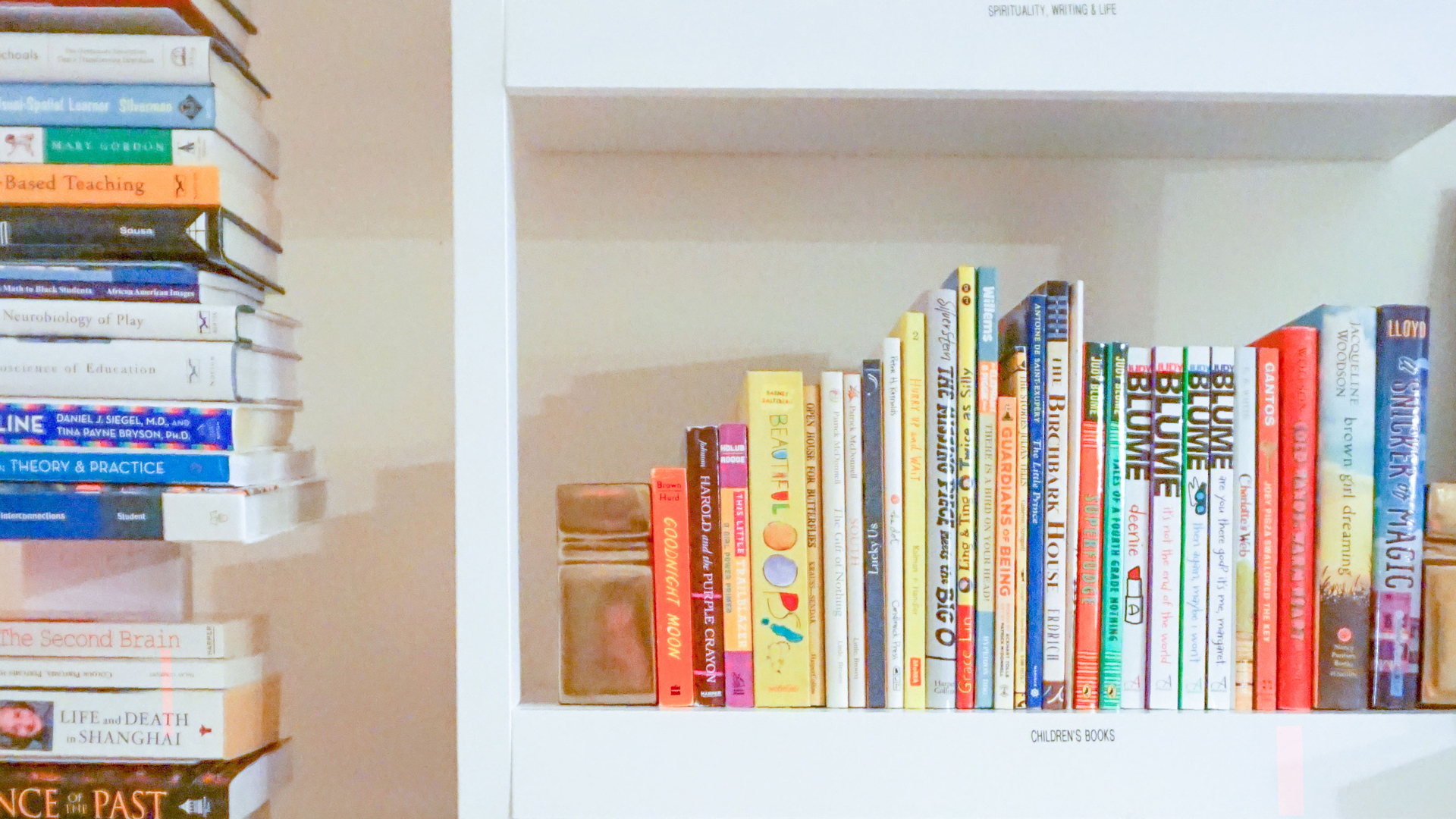
When faced with a pile of books that’s too big for the space you’ve got, you first want to ask yourself whether you definitely need every single title. When decluttering your books, "go through your collection and assess which books you want to keep," says Alvin Pullins, CEO and organization specialist at Nerd in The House.
"Consider donating or giving away any books that you no longer need or enjoy," he suggests. By streamlining your collection, "you’ll have more space to work with and keep only the ones you truly value".
Owner of More Organised, Mel Carruthers, suggests getting rid of books "that you don't use often, or where the information is available on the internet". Some books, such as travel guides, quickly go out of date, she notes.
You may also want to consider styling when choosing which books to keep. "Paperback books typically do not give off a good aesthetic," says The Organizing Professionals’ Janet Bernstein. "Hardback books, on the other hand, look much more attractive on display."
2. Consider placement

In a small room, think carefully about where to place your books, and don’t be tempted to stack them on the floor.
"Stacking directly on the floor can become a cleaning nightmare," says professional organizer Marcia Sloman. Hiding your books away is also not advised, "Don’t hide books behind closed doors in closets or cabinets – out of sight, out of mind."
Also, make sure you’re placing your books where they won’t be damaged: "Avoid exposure to sunlight and heat sources which fades and dries out the binding," says Marcia. Basements and garages shouldn’t be used to store books unless they are temperature-controlled rooms, as "excess humidity causes the paper to swell, absorb moisture, and invite mold".
But where to place your bookshelf? "Bookshelves look their best when positioned off to one side of a room and not centered on a wall," says Janet. "They should never be the focal point of a small room."
3. Consider shelving type
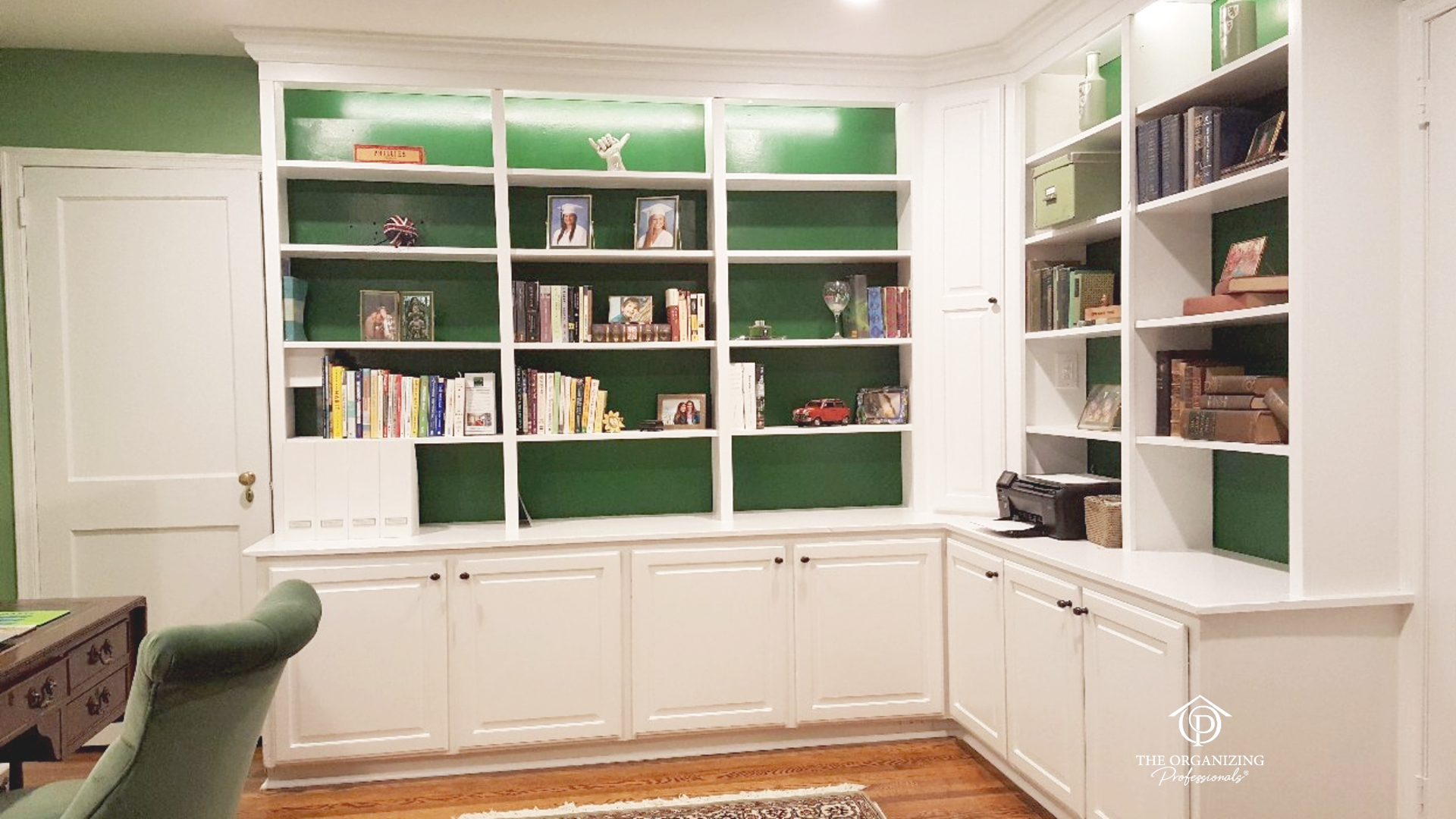
It's not just where you place your bookshelves that matters, the type of shelving you opt for will make the difference between your books looking like a cluttered mess or like they belong in a magazine. If you can afford it, then get custom shelves made to fit into your space. For a cheaper option, "ask your joiner to modify your bookcases by adding a corner unit to link them", suggests Mel.
Alternatively, "you could adapt less expensive, off-the-shelf (no pun intended!) solutions from retailers such as IKEA or Homebase". Creative IKEA Billy bookcase hacks are some of the most impressive upcycling projects you're ever likely to see.
Whatever type of bookshelf you go for, "opt for bookshelves with adjustable shelves or modular units", says Alvin. "This flexibility allows you to customize the spacing between shelves based on the height of your books."
4. Think vertically
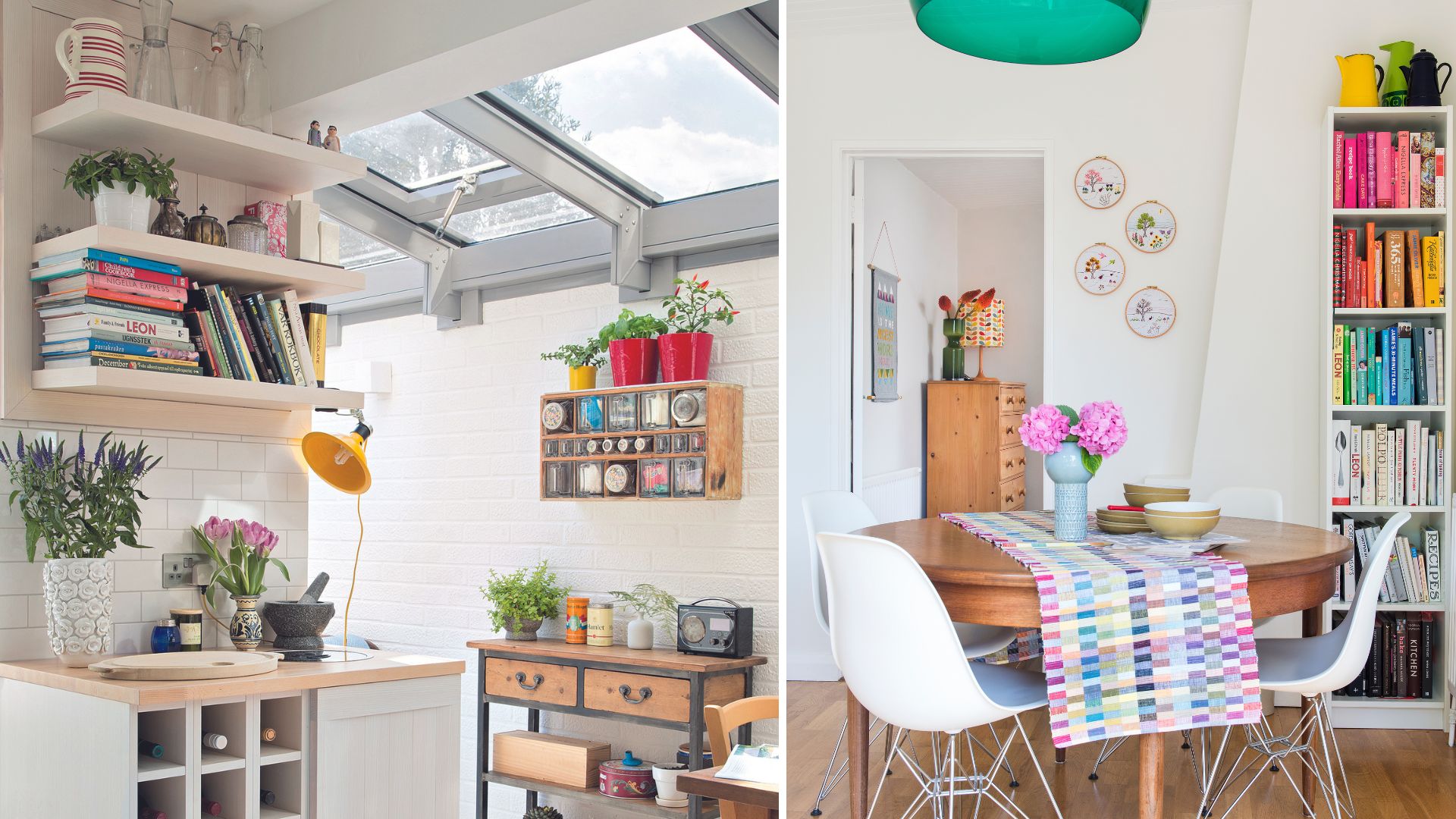
When trying to make your small space look bigger, you may need to think outside the box when it comes to placing your bookshelves.
"Install tall bookshelves or floating shelves that reach the ceiling to maximize storage capacity," advises Alvin. "This utilizes the often-neglected vertical space and allows you to store more books without occupying valuable floor area."
Marcia agrees:"To maximize storage, think vertical on walls and surfaces," she says. "If you have lots of books that you must keep, floating shelves offer flexibility."
Don’t forget that you can add shelves above other units. "You can maximize vertical space by adding shelving above your desk, dresser, or sideboard," says Mel. "Placing a bookcase on top of existing furniture also does the same – just make sure it's well-secured."
5. Create a reading nook
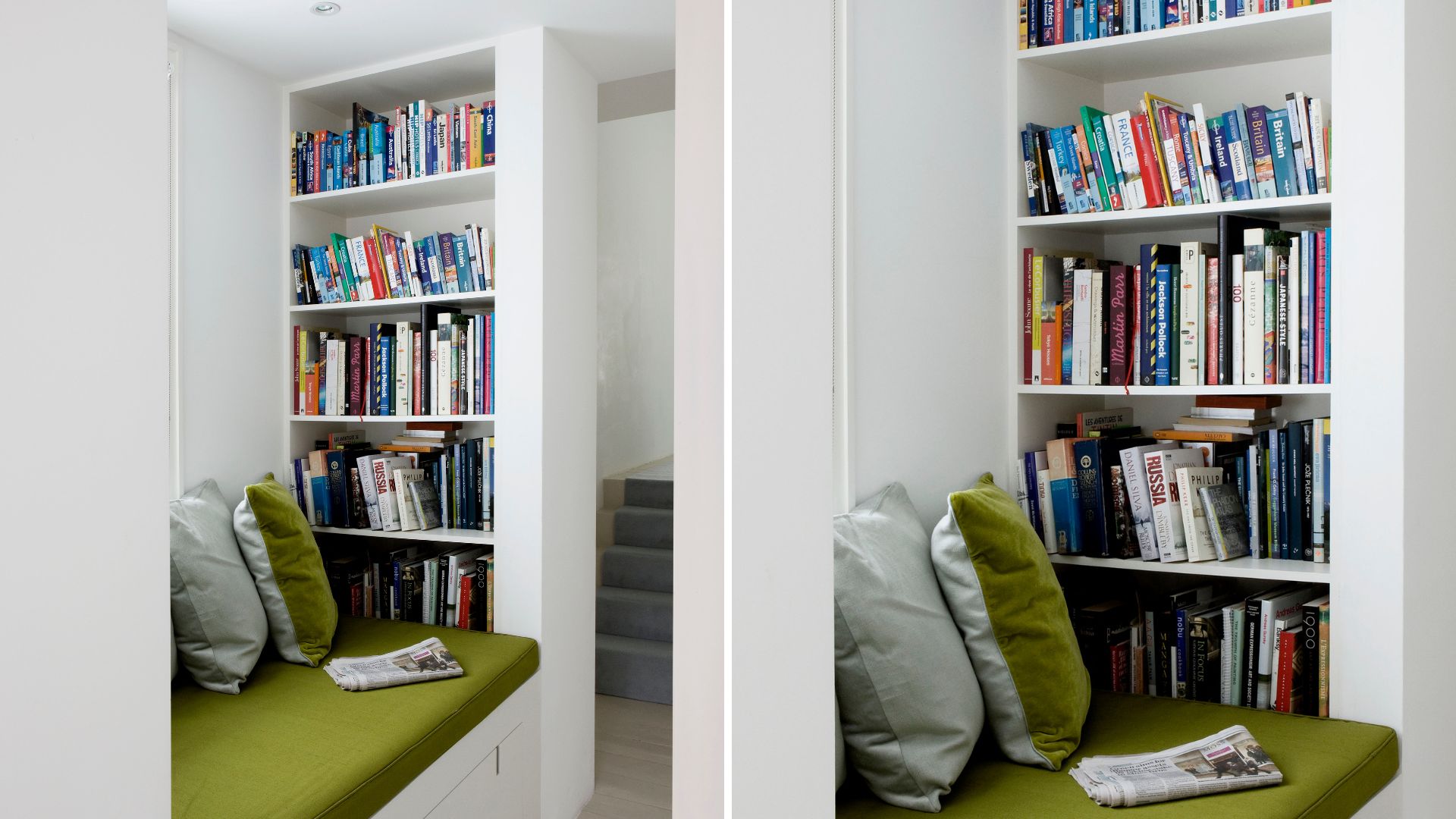
A small reading nook with a comfy chair and small shelf with a collection of current reading can really transform a room. "Your library of books can be displayed, horizontally and vertically, on a bookshelf nearby or distributed on various bookshelves," advises Marcia.
Kenzie also recommends setting up reading a nook or corner. "I would have a comfy chair and a bookshelf next to it with a floor lamp and a plant in the corner," she says. "You could also style the shelf with decor to create a beautiful vignette."
Ideally, you want your bookshelf to be within arm’s reach of your nook, notes Katie Riedel of Making Space Organization.
6. Think about zoning
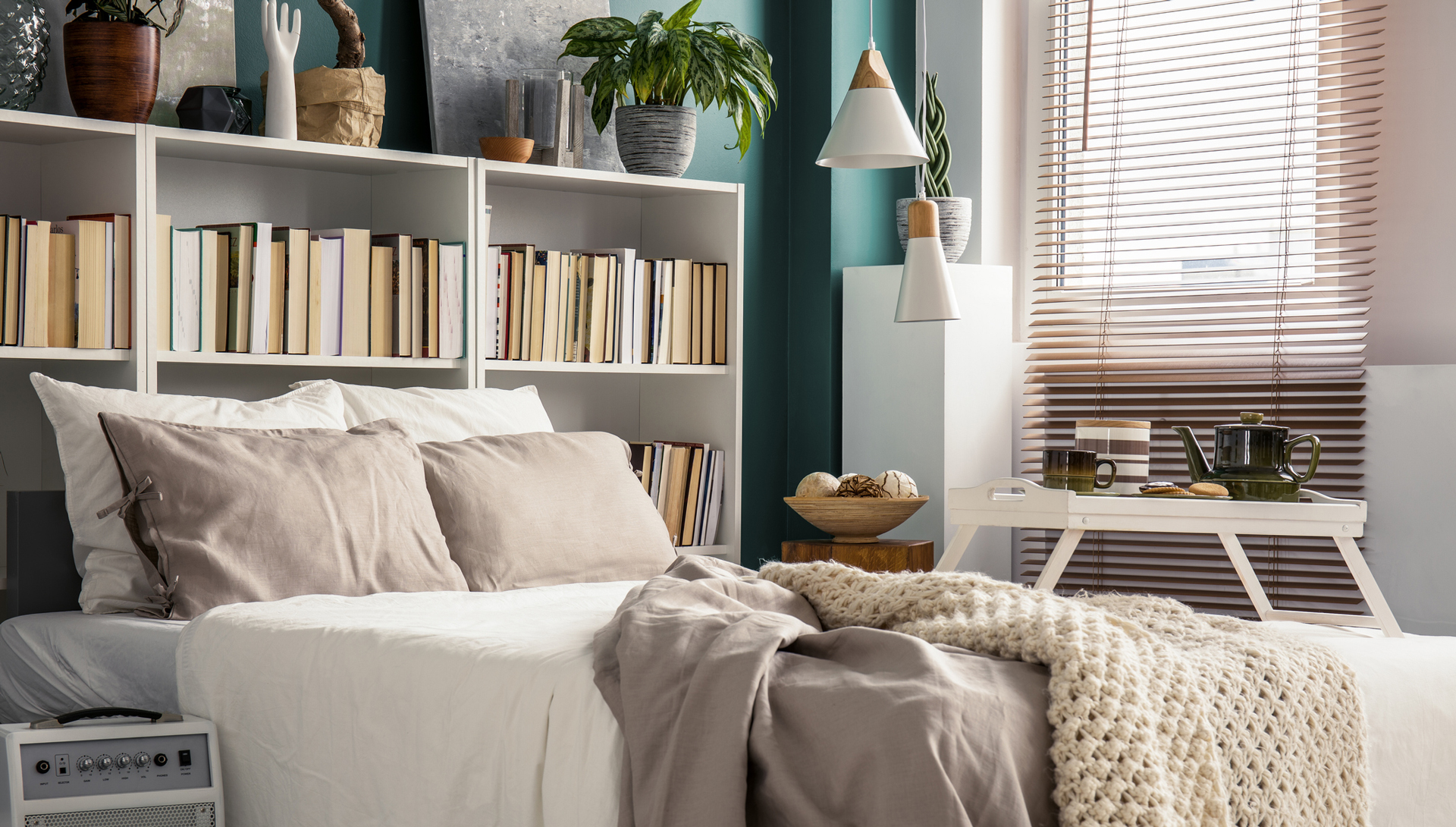
If you’ve got a studio apartment or an open-plan layout, you may want to use a bookshelf to serve as a room divider, says Mel. "When deciding on the placement, ensure that the bookshelf doesn't obstruct pathways or create obstacles in the room.
Additionally, consider the weight and stability of the bookshelf, especially if it needs to be anchored to the wall for safety."
If you’ve already zoned your room with larger pieces of furniture such as a bed or a sofa, then you may want to add a bookshelf into the mix by placing a slim or tall bookcase behind these items.
"This makes use of the often underutilized space and keeps books within reach," says Mel. It could even make your bedroom look bigger.
7. Be inventive
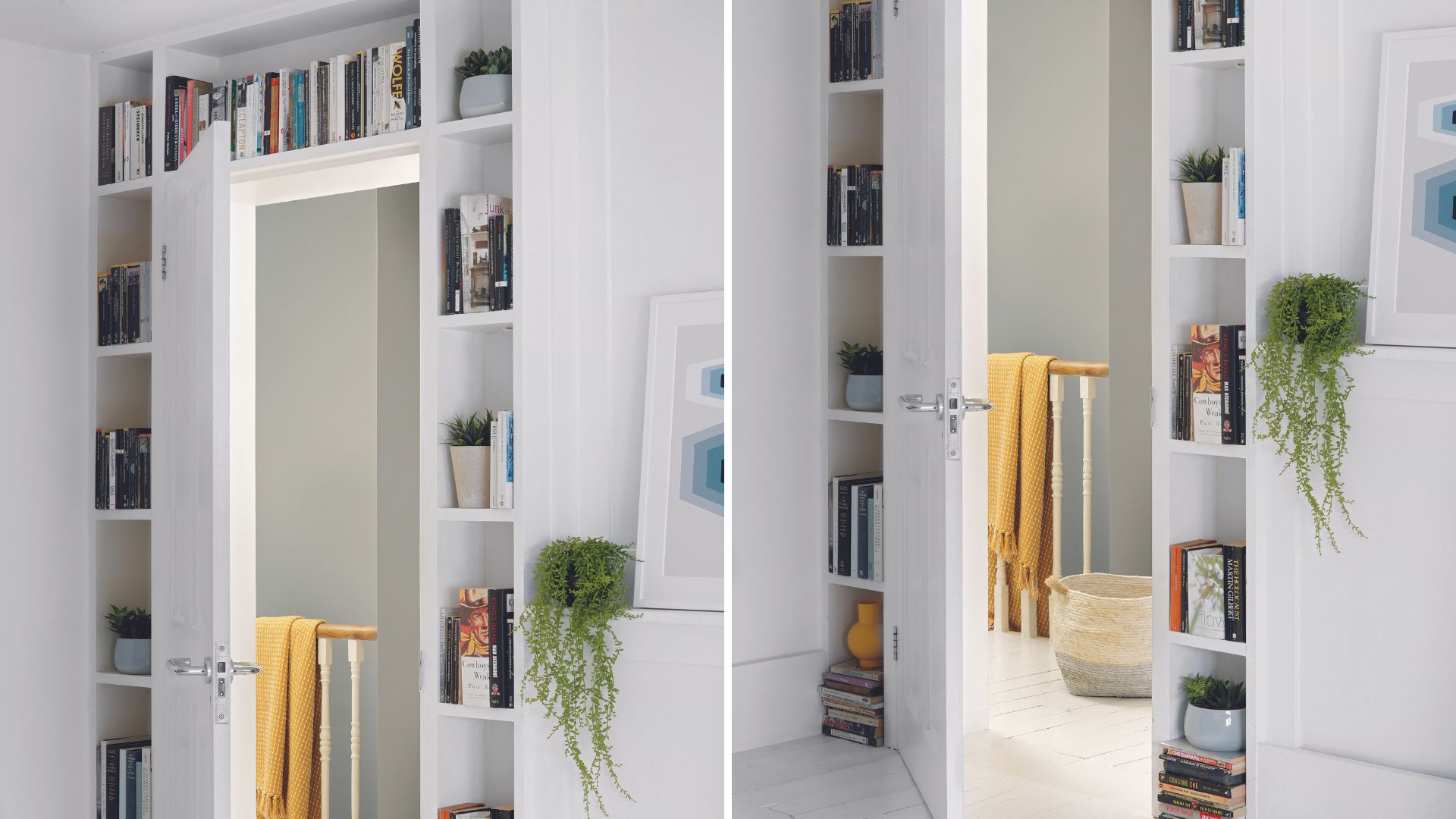
Like when organizing your closet, you can get quite creative when deciding where to store your books. "Books are super versatile on where you can store them and there are a lot of creative options," says founder of Horderly Professional Organizing, Jamie Hord.
In a small space, unconventional storage is your friend. "A few unique places you could store books is on windowsills, mantels, the wall above an entry, a nook in your headboard or a cart with wheels that you can store in a closet. We've even organized books in an unused fireplace before," says Jamie.
Alvin suggests using wall-mounted magazine racks, "or even repurposing items like wine crates or fruit crates to create unique book storage solutions". These options can add visual interest to your space, he adds.
"If your room has a low windowsill, you can place a shorter bookshelf underneath it," says Mel. "This way, you can use the space without obstructing natural light or the view."
Other spaces to consider include using the space above doorways, under beds, or even unused corners. "Install narrow shelves or wall-mounted book racks in these areas to maximize your storage potential," says Alvin.
8. Create a gallery wall
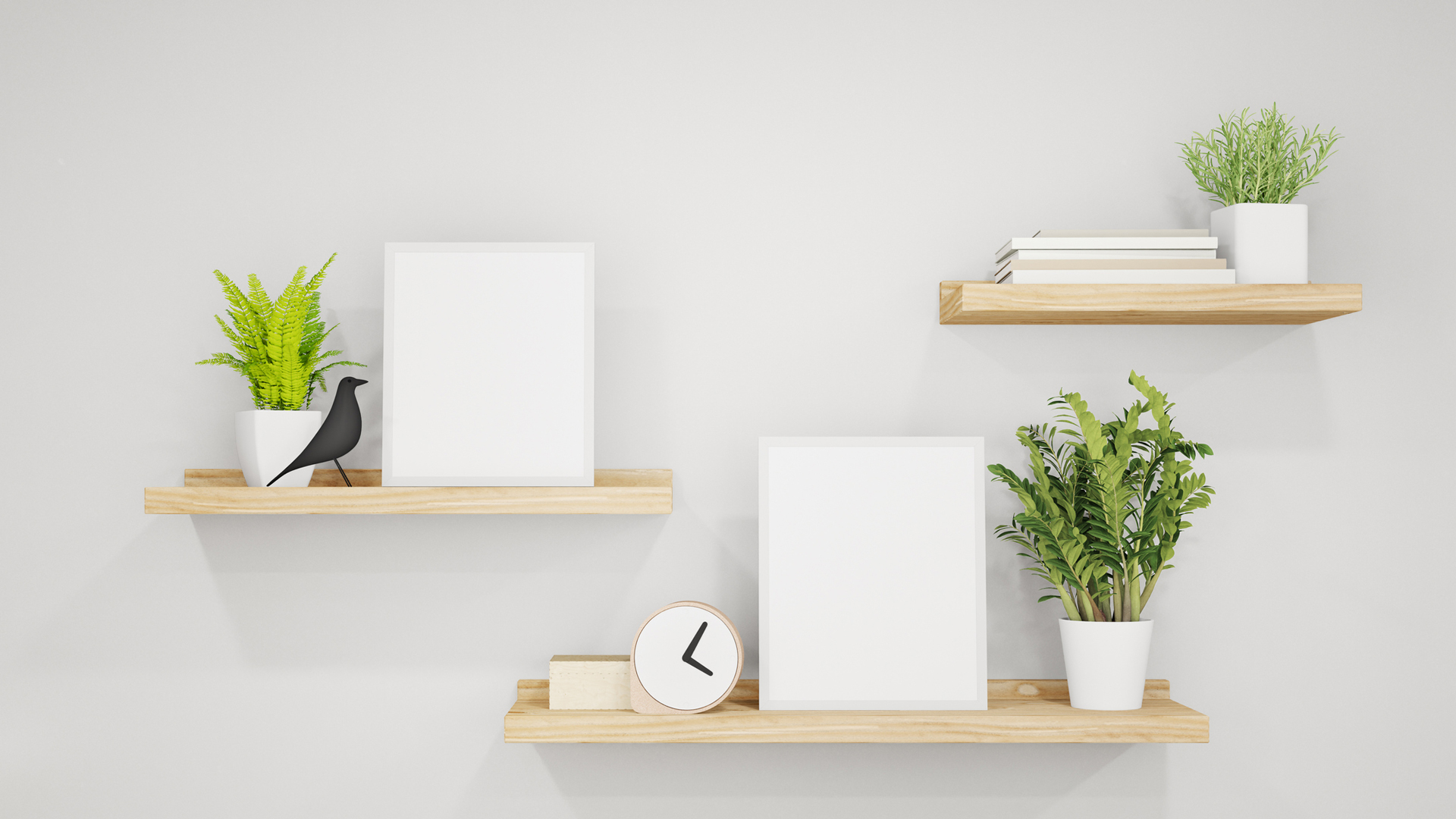
To make the most of your wall space, you can create a gallery wall of shelving. Start off by visualizing your available wall space, and sketch out your ideas, advises Marcia.
Then, "instead of a gallery of photos or paintings, create a gallery of floating or bracketed shelves. Combine art and books on the wall for a cluttercore or maximalist look".
To complete the look, Marcia suggests keeping a stepstool, attractive ladder or ladder chair nearby to reach high perched shelves.
9. Pick your organization method
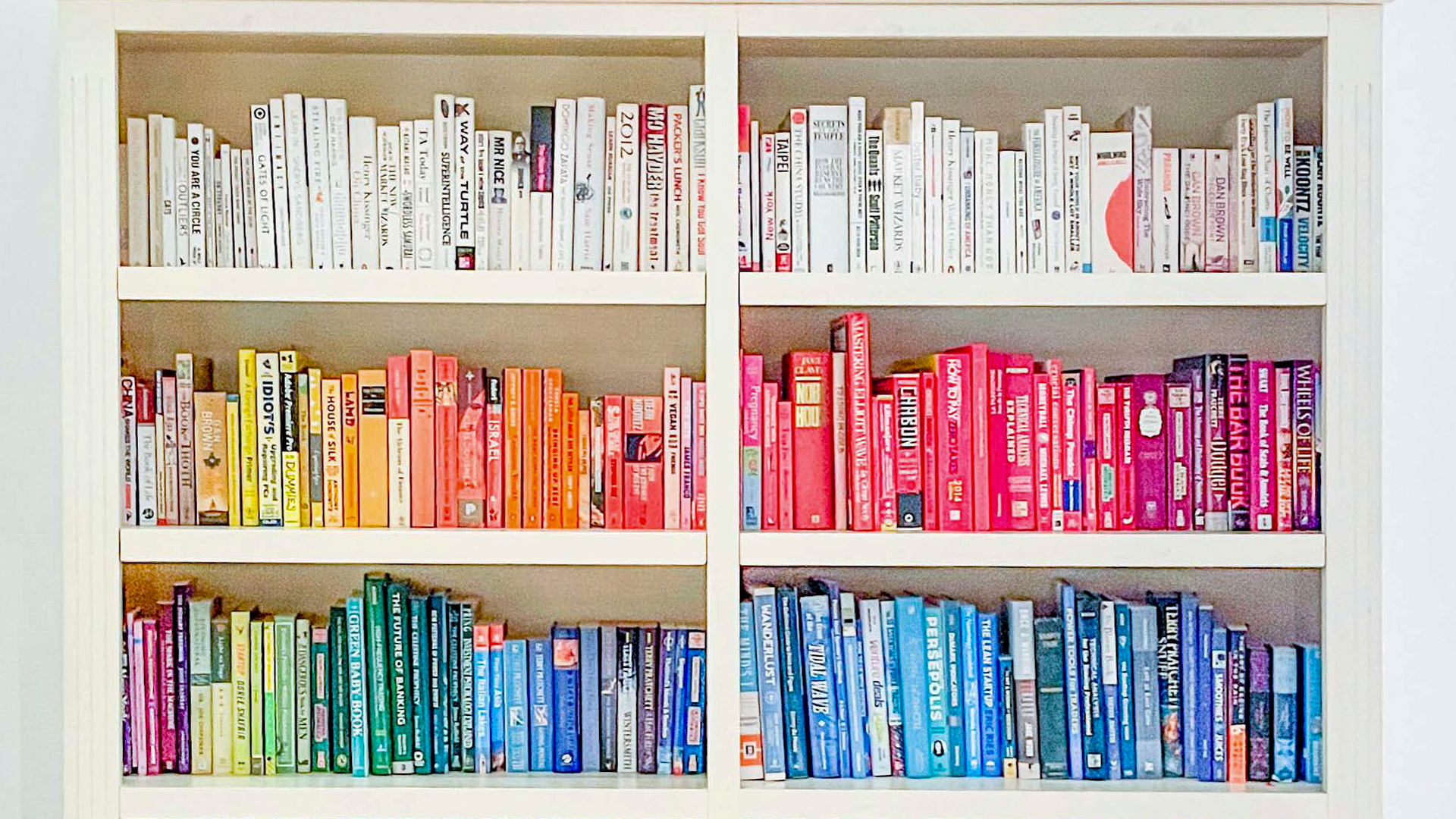
With limited space, organizing books becomes crucial, says Mel. "Without a proper system, finding specific books or maintaining an orderly collection can be a significant challenge."
As well as organizing alphabetically or by subject, there are a few other ways you can group your tomes. "You can organize by color, which is calming to the eye. Another option is to organize books by genre, which is particularly helpful if you have a larger collection," says Katie. "Lastly, organizing books by size is a great option for a small space."
Organizing by colour can add colour pops and interest in bare walls, especially in a rental property where wall decor can be limited, notes Mel, but this method is not for everyone. "I only suggest color coding for kids' spaces and only for an adult if it's a small assortment of books that have a variety of colors," says Kenzie. "Otherwise, it's too hard to locate the book you need if you color code over 100 books."
Don’t feel you have to pick one method and stick to it, though. "There are no hard and fast rules, so see what looks and feels best for your particular space and preferences," says Katie. "We learn by trial and error, so don’t be afraid to live with something for a while, and adjust from there, if needed."
10. Stack with style
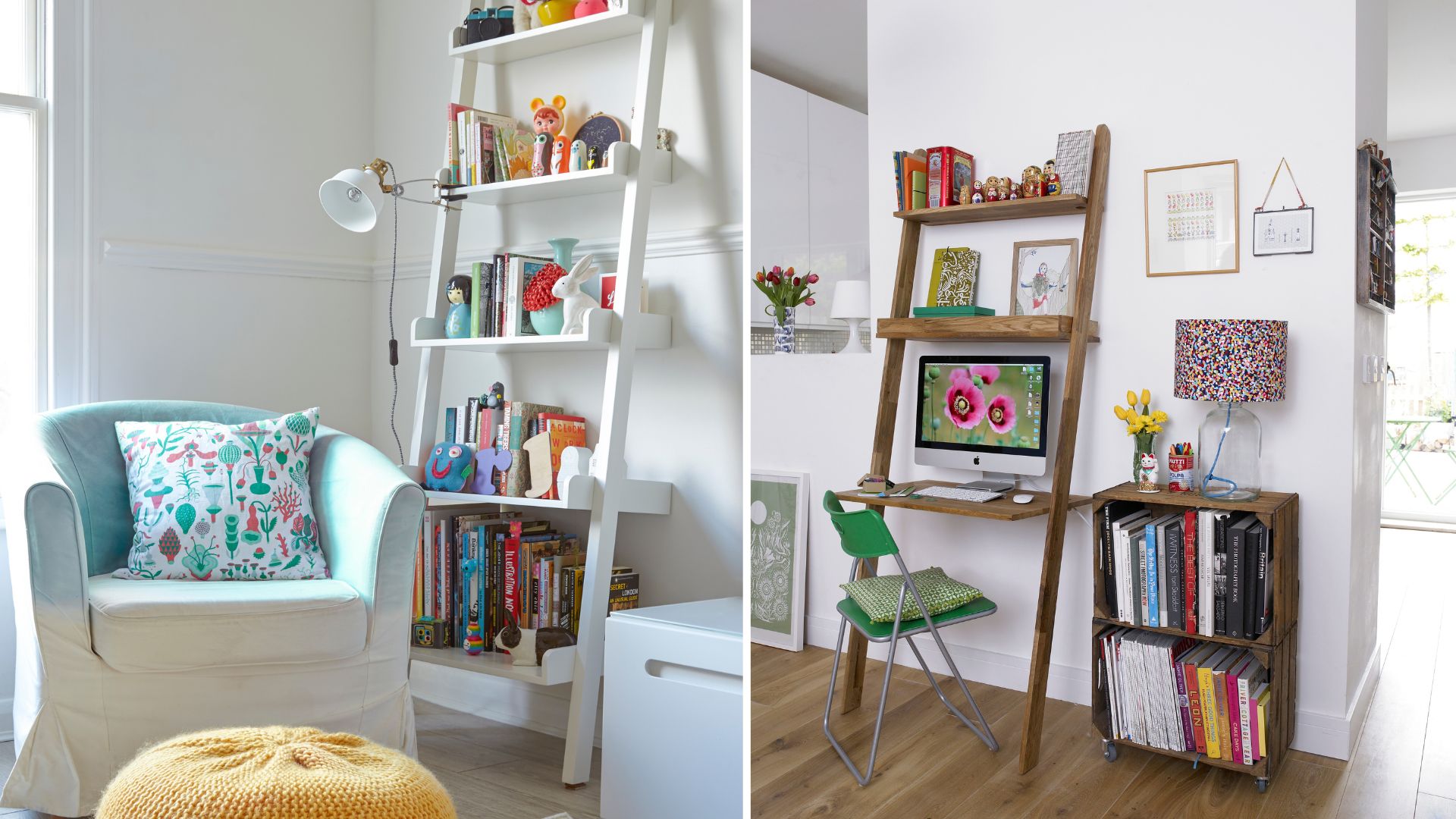
Different ways of displaying your books can help make spaces like your living room look bigger. "To maximize space, play around with how you stack books," says Jamie. "You can line taller ones vertically and do taller stack on their sides."
Kenzie also likes "a varied and collected look", and suggests "having some books upward against one shelf with a bookend, while other shelves may have some books lying flat with a decorative object on top, and generally mixing it up for each section so it has a balanced look and feel".
Mel recommends mixing both vertical and horizontal book stacking to add visual interest: "Place some books upright and stack others on top horizontally. This adds variety and breaks up the monotony of a single arrangement style."
11. Add decorative objects
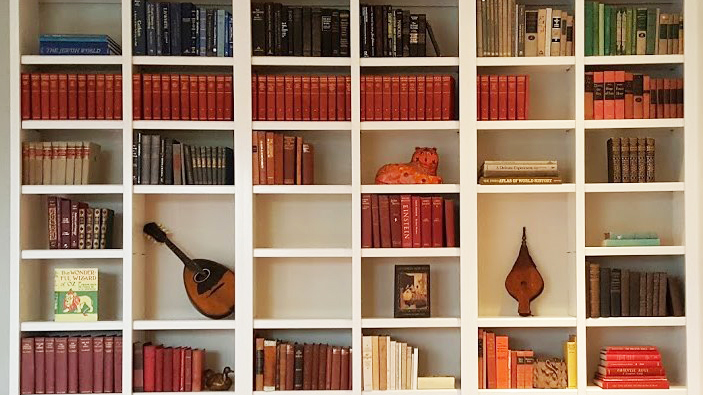
Design elements such as candles can add interest to stacks of horizontal book, says Kenzie. "This plays up that cozy intimate feel of a small space, working with what you have instead of against it."
"Mix in decorative objects or meaningful items with the books to create visual appeal," agrees Mel. "This could include small plants, sculptures, framed photos, or bookends. These objects can break up the book display and add personality to the arrangement," though be careful that you’re not just adding clutter, she warns.
You can even place items or books on the top of a bookshelf. "If your bookshelf has a flat top surface, you can place a few books standing upright, stack them decoratively, or add decorative objects to create a vignette. This utilises additional space while complementing the overall display," says Mel.
How do you store books if you don't have space?
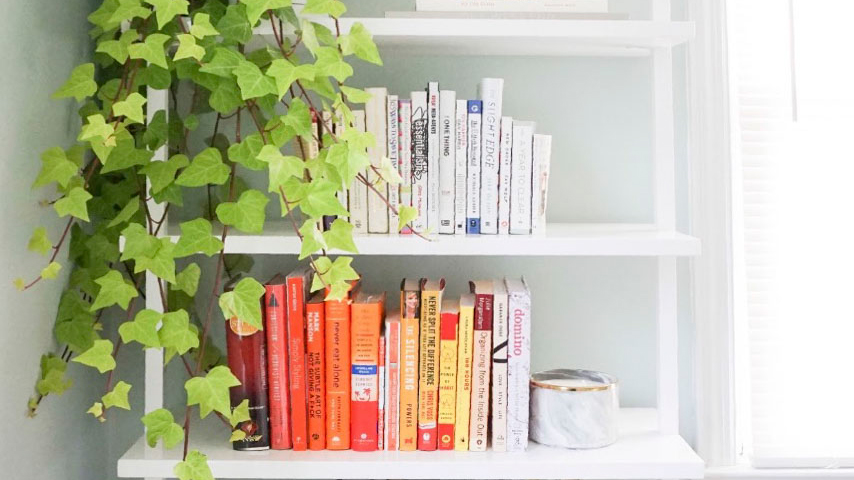
If you have more books than space, then you’ll need to declutter your home before you get started. Janet has some tips:
“Take a good, hard look at your book collection and ask yourself the following questions:
- How often have you reread the same book?
- Why are you holding onto these books?
The goal is to reduce your collection to a manageable amount that can be properly displayed.”
Marcia has a different approach: "When people have limited space, you have three choices:
- Store books in an off-site environmentally-controlled storage room
- Choose to downsize other objects to make room for books
- Decide to keep fewer books in print. Digital books and e-books may be available for your favorites."
How do you display books in a small space?
Once you’ve decided on your bookshelf, there are various options for displaying your books."Organize by color, which gives an orderly and organized look. Combine decorative items with books and mix up shelving to provide interest," says Janet, "Organizing books in size order also creates a more orderly look."
You'll also want to think about where you place your shelf, as well as the scale within the room, "Scale is just as important as placement when it comes to arranging a bookshelf," says Katie. "A small space will look best with a small bookshelf that isn’t overflowing, but holds 'just the right amount' of books."
Where should a bookshelf be placed in a small room?
Where you place your shelf will depend on your room. You may want to use a bookshelf as a divider to zone your space, or utilize vertical space or hidden nooks by adding shelving in places you might not expect, like above the door or below the windowsill.
"Utilize wall space as well, installing a few strategically placed open shelves," says Katie. "This has the advantage of not taking up precious floor space with a piece of furniture.
"Proximity to where the books will be read is also something to consider. If there’s a reading chair or nook in the space, locate the bookshelf within arm’s reach, if possible."







